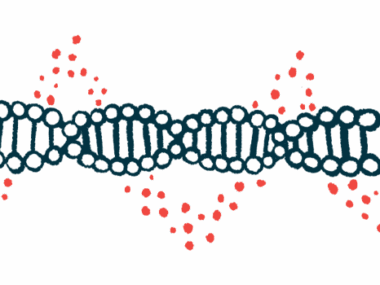Chemical Modification Key for MeCP2 Protein to Support Nerve Cells
Written by |

A specific mutation of MECP2 — the main disease-causing gene of Rett syndrome — prevents a type of chemical modification on the resulting MeCP2 protein that is key for nerve cell growth, maturation, and function, a study in lab-grown cells and mice shows.
In addition, these defects were associated with an impaired regulation of brain-derived neurotrophic factor (BDNF), a known gene target of MeCP2 that is crucial for brain development.
These findings highlight the importance of this chemical modification, called O-GlcNAcylation, in MeCP2’s neuronal effects and provide mechanistic insight on a previously reported Rett-causing mutation.
This type of information may help identify new treatment targets and approaches for Rett syndrome, the researchers noted.
The study, “Loss of O-GlcNAcylation on MeCP2 at Threonine 203 Leads to Neurodevelopmental Disorders,” was published in the journal Neuroscience Bulletin.
Rett syndrome is caused mostly by mutations in the MECP2 gene, which provides the instructions for making MeCP2. This protein regulates other genes’ activities and is involved in the growth, function, and communication of nerve cells.
While several MECP2 mutations have been associated with Rett, their effects on the resulting MeCP2 protein and its function remain largely unclear.
Now, a team of researchers in China provided insight on the effects of a Rett-associated mutation called c.608C>T (p.T203M). This mutation leads to a change in the resulting amino acid at position 203 of the MeCP2 protein from a threonine to a methionine. Amino acids are the building blocks of proteins.
The researchers first found that MeCP2’s threonine 203 (T203) is the predominant site of O-GlcNAcylation, which consists of the addition of a small sugar molecule to threonine and serine amino acids in proteins to regulate their properties and function inside cells.
This type of post-translational modification was previously shown to regulate nerve cell development and synaptic plasticity, or the ability to change and adapt the strength of the communication between two nerve cells.
Using several techniques in lab-grown mouse neurons and mice with normal and modified MeCP2, the team found that disruption of T203 O-GlcNAcylation impaired the development and maturation of dendrites, disrupted neuronal migration, and affected signal transmission at synapses.
Dendrites are specialized neuronal projections that form synapses and are involved in nerve cell communication, and synapses are the point of near contact between two nerve cells that allows them to communicate.
Given that BDNF, one of the most important target genes of MeCP2, is critical for dendritic growth and synaptic maturation and plasticity, the researchers evaluated whether the observed neuronal defects were due to dysregulation of BDNF’s activity.
Results showed that O-GlcNAcylation at T203 was indeed necessary for increasing production of RNA from the mouse Bdnf gene, as the loss of this chemical modification prevented MeCP2’s binding to a specific BDNF region that regulates its activity.
O-GlcNAcylation at T203 was also found to be key for the suppression of another target gene called Acta2, which is involved in muscle contraction.
O-GlcNAcylation was found to occur at other MeCP2 sites, but these neuronal defects were observed only in the absence of such chemical modification at T203.
“The unique role of T203 may be due to its location” on an MeCP2 domain known to be “involved in MeCP2-mediated multiple protein-protein interactions,” the team wrote, adding that, however, “the precise biological partners of T203 remain to be further identified.”
These findings highlight “the critical role of MeCP2 T203 O-GlcNAcylation in neural development and synaptic transmission potentially via [BDNF],” the researchers wrote.
“Our results identified a previously unknown function of O-GlcNAcylated MeCP2 T203, which may be essential for understanding the molecular mechanisms behind the [neuronal damage] of RTT [Rett syndrome] caused by MECP2 mutation,” they added.
Future studies are needed to “further map out major relevant molecular pathways affected by MeCP2 T203 O-GlcNAcylation and their possible involvement in the [development] of RTT disorders,” the scientists wrote.
This “may lead to novel therapeutic targets for reversing the neural deficiencies in RTT,” they concluded.






